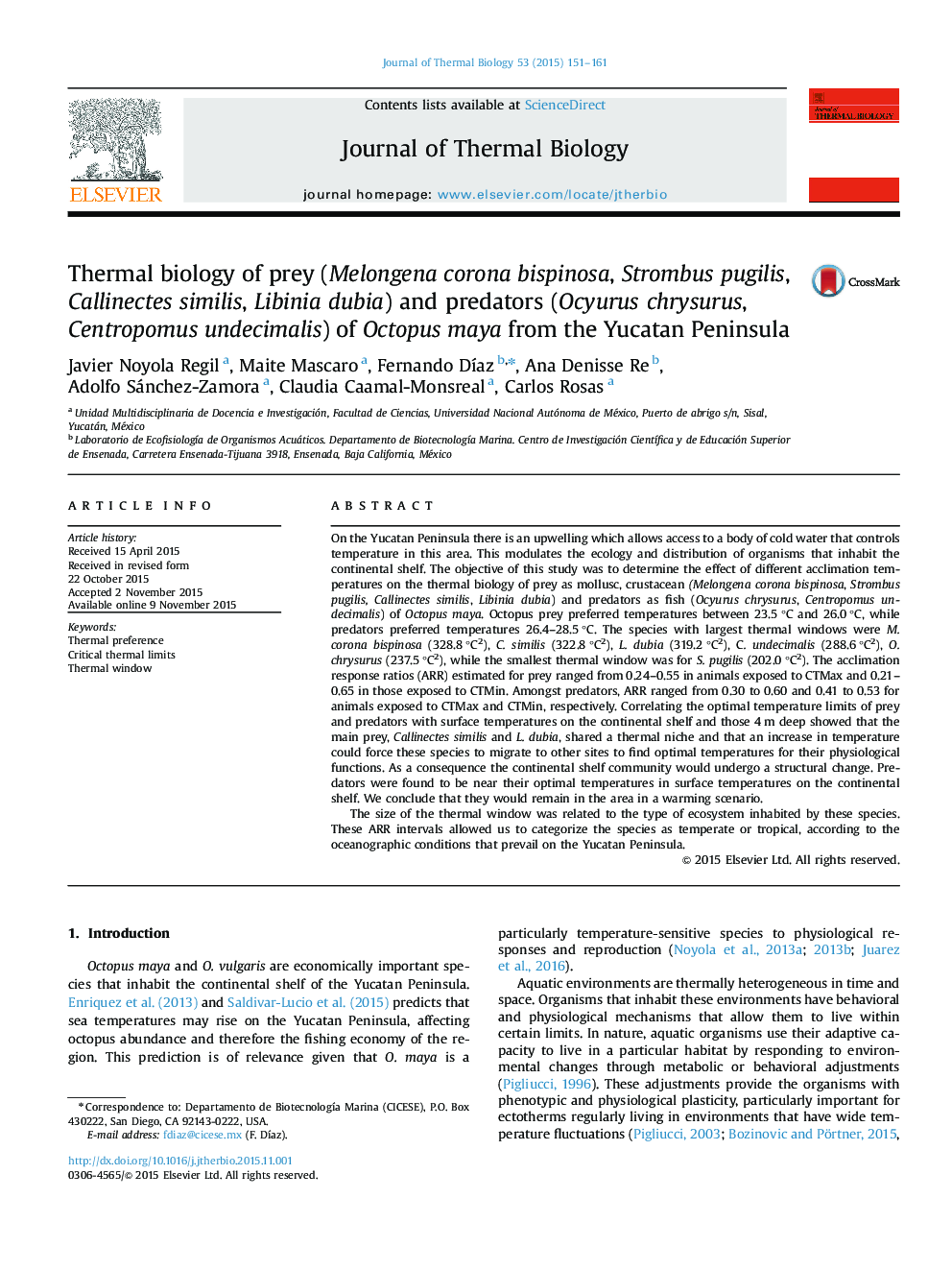| Article ID | Journal | Published Year | Pages | File Type |
|---|---|---|---|---|
| 2842789 | Journal of Thermal Biology | 2015 | 11 Pages |
•Octopus prey preferred temperatures between 23.5 °C–26.0 °C, while predators was 26.4–28.5 °C.•The thermal window was related to the type of ecosystem inhabited by these species.•ARR intervals allowed us to categorize the species as temperate or tropical, according to the oceanographic conditions that prevail on the YP.
On the Yucatan Peninsula there is an upwelling which allows access to a body of cold water that controls temperature in this area. This modulates the ecology and distribution of organisms that inhabit the continental shelf. The objective of this study was to determine the effect of different acclimation temperatures on the thermal biology of prey as mollusc, crustacean (Melongena corona bispinosa, Strombus pugilis, Callinectes similis, Libinia dubia) and predators as fish (Ocyurus chrysurus, Centropomus undecimalis) of Octopus maya. Octopus prey preferred temperatures between 23.5 °C and 26.0 °C, while predators preferred temperatures 26.4–28.5 °C. The species with largest thermal windows were M. corona bispinosa (328.8 °C2), C. similis (322.8 °C2), L. dubia (319.2 °C2), C. undecimalis (288.6 °C2), O. chrysurus (237.5 °C2), while the smallest thermal window was for S. pugilis (202.0 °C2). The acclimation response ratios (ARR) estimated for prey ranged from 0.24–0.55 in animals exposed to CTMax and 0.21–0.65 in those exposed to CTMin. Amongst predators, ARR ranged from 0.30 to 0.60 and 0.41 to 0.53 for animals exposed to CTMax and CTMin, respectively. Correlating the optimal temperature limits of prey and predators with surface temperatures on the continental shelf and those 4 m deep showed that the main prey, Callinectes similis and L. dubia, shared a thermal niche and that an increase in temperature could force these species to migrate to other sites to find optimal temperatures for their physiological functions. As a consequence the continental shelf community would undergo a structural change. Predators were found to be near their optimal temperatures in surface temperatures on the continental shelf. We conclude that they would remain in the area in a warming scenario.The size of the thermal window was related to the type of ecosystem inhabited by these species. These ARR intervals allowed us to categorize the species as temperate or tropical, according to the oceanographic conditions that prevail on the Yucatan Peninsula.
